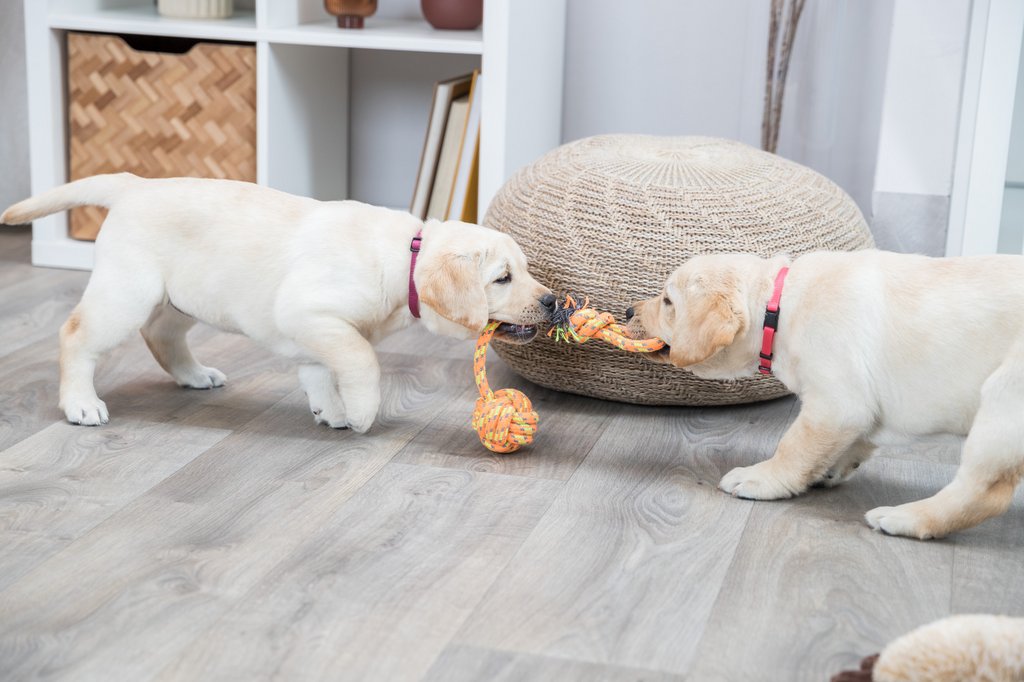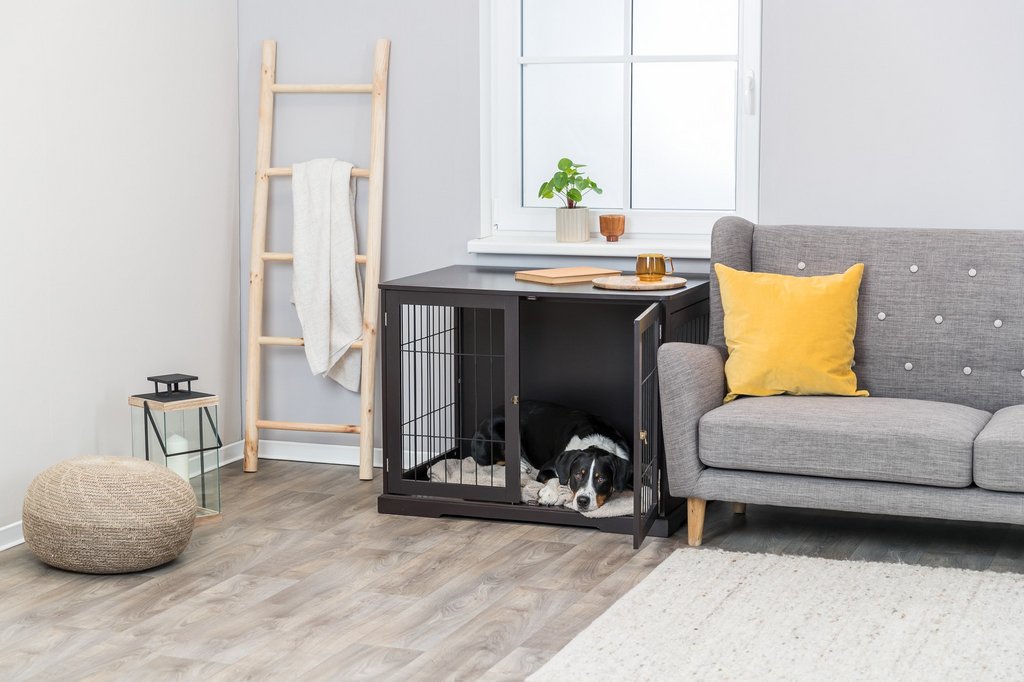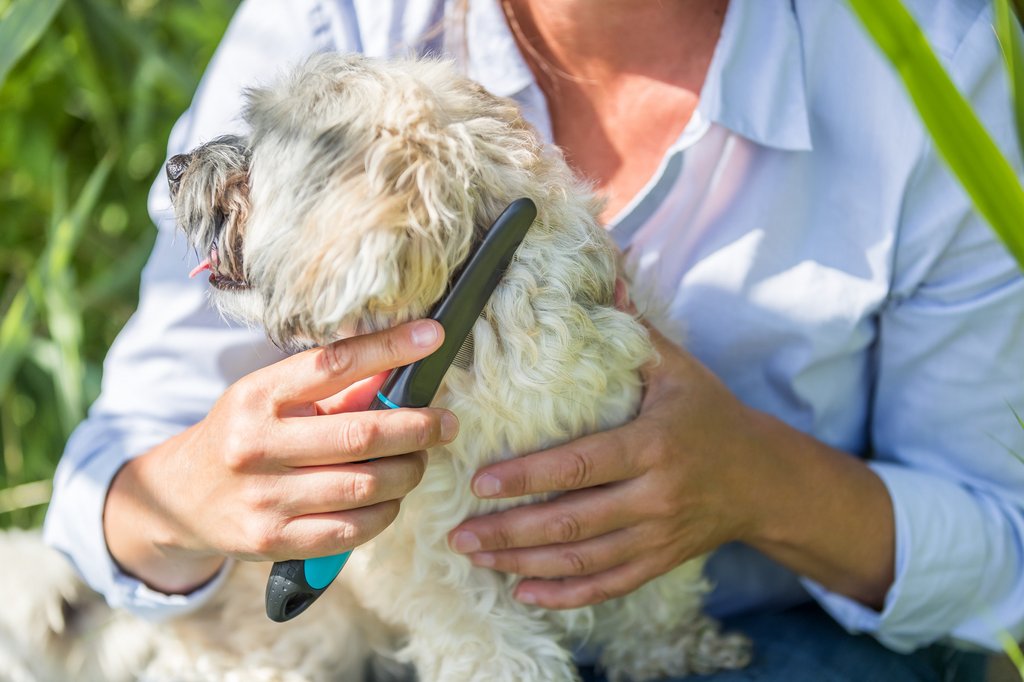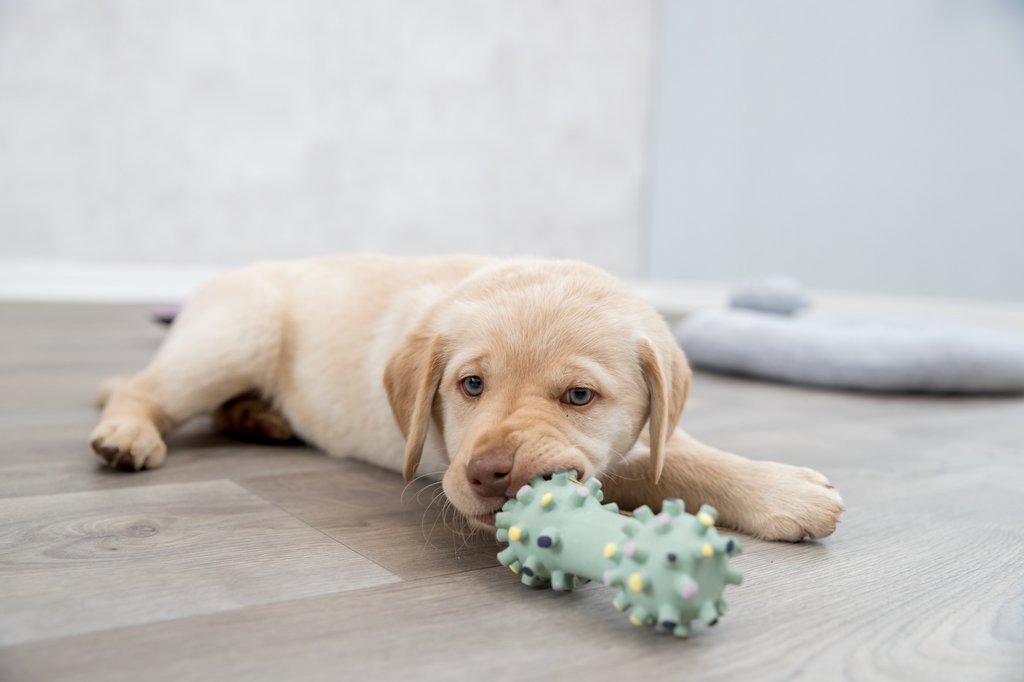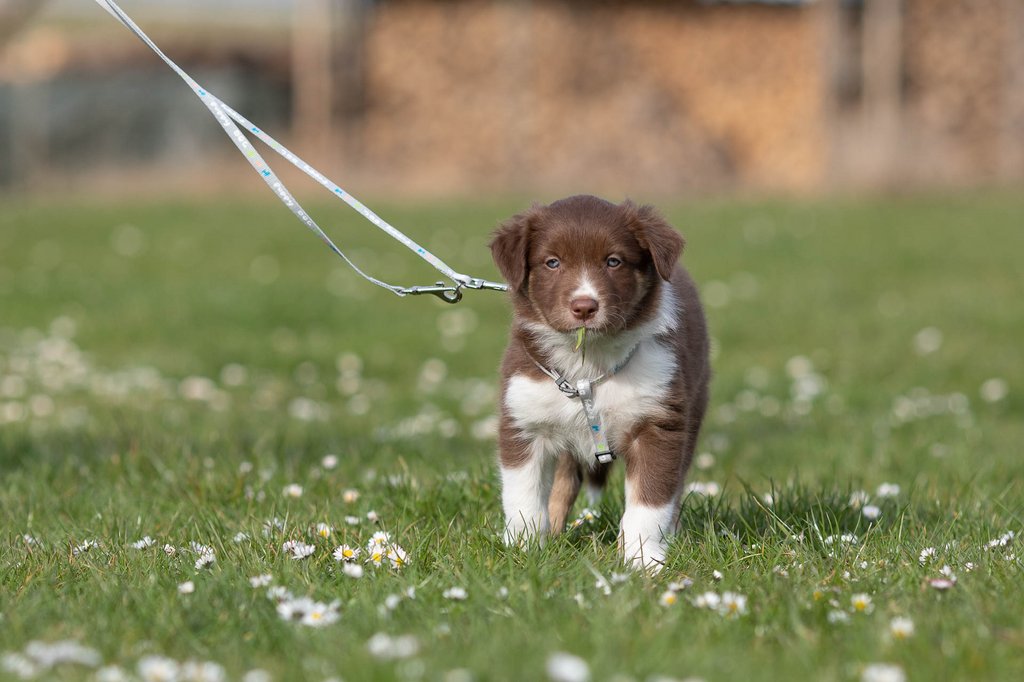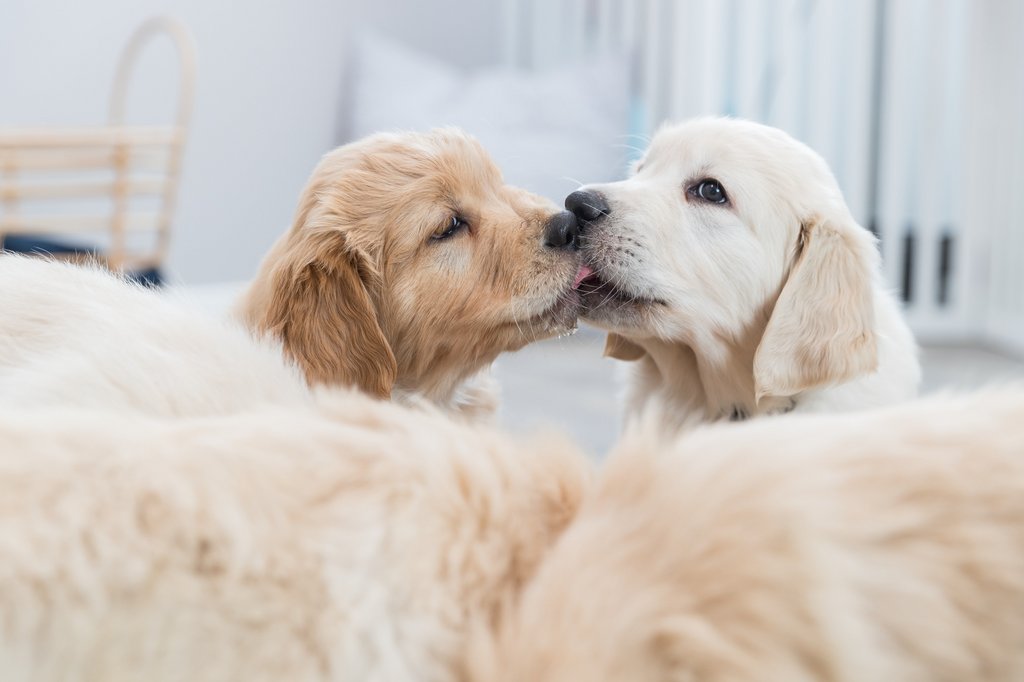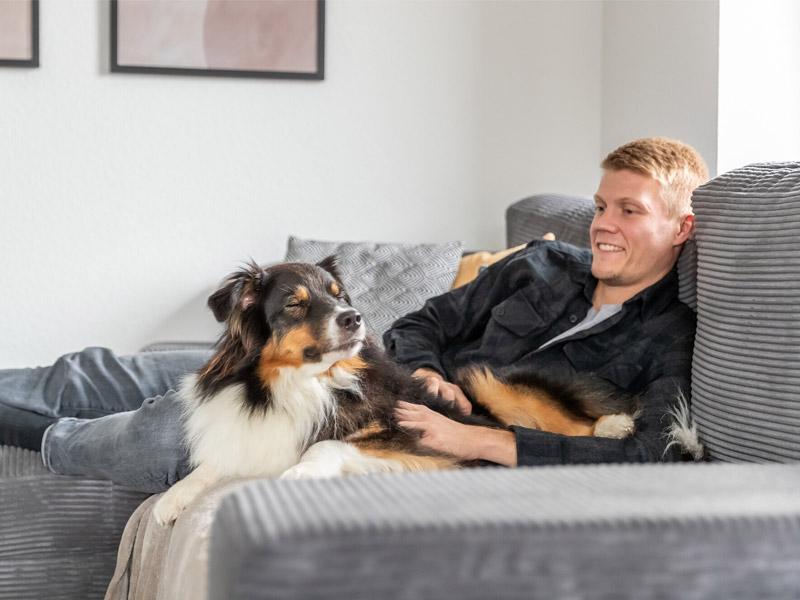Getting Prepared
Are you ready for the new bundle of joy? Exciting times are ahead, full of new experiences and joyful moments. Indeed, there will be some challenges that you have to master together with your puppy. We wish you a great start and would like to assist you with a few tips and tricks. It is best to start preparations a few weeks before your new four-legged family member moves into your home.
The first essential requirement is a suitable place to sleep: dog beds, cushions, and baskets come in various styles, colors, and sizes. The important thing is that your dog can stretch out comfortably in or on them. Next, suitable bowls for food and water are also essential. Products made of stainless steel or ceramic have proven their worth as they are easy to clean and durable. When choosing the right food for your dog, start with what the breeder or previous owner recommends. Then you can slowly change to other types of food or feeding times.
The key is to start your preparations early, stay consistent, and introduce new things slowly. We wish you luck, and we hope you enjoy your new adventures and make many memories.
Homesick
Your puppy will probably miss its mother and siblings during the first few nights. Place their new bed next to yours - being close to you will be good for the puppy and create a bond between you. In addition, a blanket or a toy from the original dog family will bring a bit of comfort for the puppy into the new home
Safety
Make your home puppy-safe before your little friend moves in. Puppies are very inquisitive and your little one will try to climb everywhere and chew on a lot of things. It is best to place your favourite things out of reach for a few weeks. Power cables and other sources of danger should be kept out of the puppy’s reach, too. The bitter-tasting chew stop spray can help to reduce the drive to chew on things. In the long run, however, there is no way past a clear ‘no’ at the right time. Stairs can be secured with a barrier. Think about whether certain rooms, e.g. the
kitchen or children’s rooms should be dogfree zones right from the start. Barriers are the right way to ensure this.
Retreat Option
If you have to leave your puppy alone for a few minutes, a home kennel or mobile kennel is helpful. However, you need to acquaint the puppy slowly and in small steps to staying in a closed kennel on its own. To make the kennel a place where the puppy likes to be, you need a cuddly blanket, a water bowl and a tasty chewing bone. The dog needs to learn that this is a place for retreat when it needs a break. During short periods of rest, you can start to close the door of the kennel for a moment from time to time. Open the door again while the puppy still feels relaxed and happy. The kennel should never be an unloved prison. Prolong the time that the puppy stays in the kennel on its own step by step. That way you can do short jobs quickly and calmly while your puppy is safe in the kennel.
House Training
One of the most important requirements for a harmonious co-existence with a puppy is house training it. For this training, you need a place where your dog is allowed to pee and poo and that you can reach almost instantly. This can be a garden or the grass verge outside your door. If nothing of the kind is available, you can use a puppy toilet in your home. The basic rule is: Take your puppy there after sleeping, feeding and playing, and wait patiently until it has relieved itself. Do not forget to praise the little guy for this. That way, your puppy learns in a much betterway than if you punish it for peeing or pooing in places where this is not wanted. Should things go wrong, a urine stain remover comes in handy. Stains and smells are removed biologically and vanish completely.
Fur Care
Especially during the seasonal changes of coat in spring and in autumn, it pays off to regularly use brush and comb. This not only makes your four-legged friend feel better, it also means that significantly less dead hairs spread to the surroundings. For long, short, smooth or coarse hair – specialist shops offer a wide range of care products. It is best to seek advice there on which products are the most suitable for your dog’s type of coat. You can practise a care routine for later with a soft brush or a massage glove. Be very gentle and stay patient if your puppy is excited. You can calm the puppy with a bit of liver pâté or another tube snack. The rule for bathing is: as rarely as possible,
as often as necessary and only with a mild shampoo for puppies. Do not forget to dry the puppy thoroughly as puppies get cold more easily than fully-grown dogs. Again, the rule is: start slowly and gently. In cold weather, a pullover or a coat protects your puppy from getting cold, a warming blanket is also useful.
Play
Your puppy will be very enthusiastic if you play together at eye level. Particularly at the beginning, there is nothing more important than extensive playing. Take time for this, as it gives you the chance to get to know each other and strengthen the bond between you. In addition, it is useful to train future behaviour in games. A small rule is particularly important at this point: If the dog’s teeth get into contact with your skin, interrupt the game. This allows your dog to develop a reliable bite inhibition, and it will treat humans equally carefully in the future. The right puppy toy should be robust but not too hard. Particularly suitable materials are TPR and natural rubber as well as ropes made of cotton. You can do without squeakers or similar things. These sounds are much too exciting for most puppies. Make sure the toy is large enough, so that the puppy cannot swallow it. Do not leave your puppy unattended with a toy. As soon as the puppy starts to destroy the toy, take it away and offer a chewing bone instead. At the end of each game, the toys are tidied away. That way, the toys remain special and the excitement lasts longer.
Sniffing, licking & gnawing
Licking plates are a great possibility of keeping your puppy occupied in a relaxed way. Most dogs really enjoy licking of snack pâtés, dairy products or wet feed with abandon. At the same time, this has a calming effect.
The sniffing carpet challenges your puppy’s nose. There are treats hidden between the tassels and fabric layers to be found. The optimal challenge that never gets boring. A big advantage of licking plate and sniffing carpet is that your pet is busy for a long time without consuming too many snacks. Even a part of the daily feed ration can be given with one of these two products instead of out of a bowl. Also chewing is a natural instinct. Therefore dogs should be offered options to do this from a young age on. Chewing shoes and thin chewing rolls are particularly suitable for young puppies. Start by choosing pure rawhide products to get the dog used to these chewing objects. Later you can treat the dog to more elaborate products. For example,
chewing items with dried chicken are very popular with dogs.
Education & training
Education is necessary, for it sets the rules for your future life together. At least equally important, however, is a bond full of trust between you and your dog. Therefore, refrain from punishment if possible. There are sufficient educational approaches that do without it. You need to understand that a puppy wants to repeat behaviour that has been rewarded. For you this means that you reward your puppy with feed or a game as soon as it does something right. Dog schools or a dog sports club will support you in educating your dog. Training with a clicker is one option to achieve learning success with positive confirmation alone. This scientifically based learning method does not work with punishment. A soft clicker with an extra soft sound is particularly suitable for puppies.
Dog activity strategy games provide exciting alternatives and offer your little friend the first challenges in memory sport and dexterity training. There are many different options where to hide treats that the dog has to get by pulling, pushing or lifting some part of the game. To avoid frustration, make it as easy as possible for your puppy at the start and only increase the level of difficulty slowly.
Relaxed walks
A relaxed walk together with your puppy cannot be taken for granted. Therefore, practise walking on a loose leash right from the start. Begin with small training rounds, in which you never allow the leash to become tight. If your dog begins to pull, stop walking. Your puppy should not get into the habit of pulling on the leash to get ahead. Besides walking obediently on a leash, the sure recalling of your pet is an important issue. Particularly at the beginning, puppies will follow their parent person of their own accord. You can make use of that to recall your dog later on when you happen to be outside without a leash. Practise in a fenced in area. As an alternative, tracking leashes are an optimal safeguard. Call your pet and attract it with joint playing or running. When the puppy comes to you, reward it with
On Tour
Your puppy is particularly inquisitive and willing to learn up to its 16th week. Use this time to explore as many things as possible together. It would be ideal if, already in this early embossing phase, your dog could have positive experiences with everything it should be able to cope with later. Try to find the right amount of new experiences, for too many new impressions will overstress the little one at first. A general rule: a five-minute walk per month of age. Give your puppy time to explore everything at its own pace. For example, a stroller is ideal for short periods of rest during longer walks. For transporting the puppy in a car, you will need a suitable box, a car grid or car seat. A dog that has not been attached can be thrown forward uncontrollably in case of an accident and this is extremely dangerous for the dog as well as for everyone else in the car. With large breeds, it is important to be gentle on the joints during growth. So, jumps from a car should be avoided. If you often go by car, it is advisable to buy a ramp or pet stair.
Check List
To Do
- Get pet owner liability insurance
- First examination at the veterinarian (potential vaccinations, treatment for worms)
- Join a dog school and/or dog sports club
- Make your home puppy safe
First Equipment
- Puppy feed (consult breeder)
- feed and water bowl
- Harness and/or collar
- Leash
- Sleeping place (bed, cushion or condo)
- Transport box, car grid or car seat
- Grooming brush
- Chewing items
- Toys

